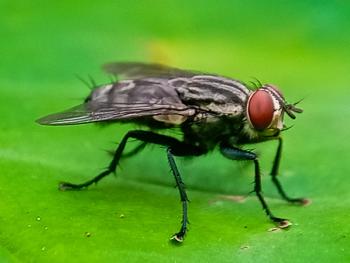
National Mutt Census examines health trends, parasite control and compliance
National Report - Only 30 percent of mixed-breed dogs are on monthly flea-and-tick medications, according to a new survey from Mars Veterinary.
NATIONAL REPORT — Only 30 percent of mixed-breed dogs are on monthly flea-and-tick medications, according to a new survey from Mars Veterinary.
Despite the finding, 90 percent of mixed-breed owners say they see a veterinarian once or twice a year, and 77 percent of owners say they "always" comply with their veterinarian's recommendations.
The data from the 2010 National Mutt Census was gathered to examine trends in ownership and health status of mixed-breed dogs. The data was analyzed from more than 36,000 samples and more than 16,000 responses from an online survey of mixed-breed dog owners.
Since mixed-breeds account for more than half, 53 percent, of companion canines in the United States, Dr. Angela Hughes, a veterinary genetics research manager for Mars Veterinary, says the findings could help veterinarians better understand the health problems from this significant population of dogs.
"The Mars Veterinary National Mutt Census provides a vivid snapshot of the past and present trends in mixed-breed dogs," Hughes says. "Thanks to the census, we know what breeds are widespread, as well as how people are caring for their dogs and what health concerns they may have."
Until now, the genetic make-up of those breeds has been a mystery.
German Shepherds, the second most-popular breed registered with the American Kennel Club, is also the most common breed found in the genetic makeup of the mutt population in the United States.
The other most common breeds associated with mutts, in order, are Labrador Retrievers, Chow-Chows, Boxers, Rottweilers, Poodles, American Staffordshire Terriers, Golden Retrievers, Cocker Spaniels and Siberian Huskies.
Some of the top mutts reflect past trends in breed popularity, the report states. "If a breed was trendy in the past, but has fallen from popularity, it may still represent a large portion of the mixed-breed population," the report states. "For example, the Chow-Chow breed—popular in the 1980s—is commonly found as the grandparent or great-grandparent level in tested mixed-breed dogs. In contrast, American Staffordshire Terriers are reportedly growing in popularity against a trend of declining breed registrations overall."
A look at veterinary care
In terms of veterinary care, almost half of mixed-breed owners (43 percent) say their dog received veterinary care in the last six months. About 33 percent of mixed-breeds got veterinary care in the last month and 20 percent in the last year. Only 4 percent had not received veterinary care in more than a year, according to the survey.
Most mixed-breeds see a veterinarian once or twice a year (49 percent and 43 percent, respectively), while only 8 percent admit to taking their dogs to a veterinarian only when they are ill.
About 73 percent of the respondents reported to be on monthly preventives, while 18 percent were not on any. Heartworm preventives are given irregularly to 9 percent of the respondents' dogs, according to the survey.
In contrast, 77 percent of mixed-breed owners say they always comply with recommendations from their veterinarian, compared to 23 percent who answered "sometimes." No mixed-breed owners said they never comply with advice from veterinarians.
Although the survey asked questions about genetic disease diagnoses, there were not enough responses to generate useable statistics in this area, adds Laura Nedbal of Weber Shandwick, a public relations firm that worked with Mars on the survey.
Here are some of the other findings:
- About 89 percent of mixed-breeds have been spayed or neutered.
- Dry food is the most popular choice for mutts (65 percent), followed by feeding a mixture of wet and dry (21 percent), raw food and scraps (9 percent) and all wet food (5 percent).
- Nearly 70 percent of mixed-breed dogs don't use regular flea-and-tick preventives.
- 48 percent say they sleep with their dogs.
- Nearly 100 percent (99.7 percent) of survey respondents say they regard their dog as a member of their family.
- Most mixed-breed owners have multiple pets, but few children. A quarter of these owners have just one pet, 26 percent have two pets, 17 percent have three pets, about 11 percent have four pets and 21 percent have five or more pets.
- Dogs weighing more than 80 pounds represent less than 11 percent of the mixed-breed population.
- Nearly half of all the mixed-breed dogs (46 percent) were obtained from a shelter, while 18 percent came from friends and neighbors.
- Almost half (47 percent) all mixed-breed owners live in the suburbs, followed by the city (30 percent), rural areas (18 percent) and on farms (3 percent).
Detailed information about the census results for each state can be found at
muttcensus.com
.
Newsletter
From exam room tips to practice management insights, get trusted veterinary news delivered straight to your inbox—subscribe to dvm360.






